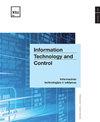通过脉搏波速度和深度学习技术预测糖尿病患者动脉硬化风险
IF 2
4区 计算机科学
Q3 AUTOMATION & CONTROL SYSTEMS
引用次数: 1
摘要
糖尿病和动脉硬化是相互关联的主要健康问题。了解这两个因素可以有效地预防和避免疾病。对于心血管疾病的发展,动脉硬化和糖尿病是病理过程的考虑因素。现有研究者报道的这两种因素与动脉僵硬并发症与糖尿病的关系仍在研究中。动脉硬度是通过脉搏波速度(PWV)来测量的,它影响糖尿病患者的心血管疾病。此外,本研究通过机器和深度学习模型建立了动脉僵硬度的医学预测模型,对高危因素患者进行预测。以肱-踝脉波速度(baPWV)和空腹血糖(FBG)为基准。提出了基于鲸鱼优化的高斯最小绝对收缩和选择算子(LASSO)用于特征选择。首先,利用LASSO从波浪测量中提取关键特征,然后利用主成分分析(PCA)去除异常值。其次,高斯回归从LASSO识别的特征中选择基于pwv的相关特征。这些部分是提高预测模型精度的关键。因此,使用一种称为cat优化方法的进化算法进一步改进所选特征。第三,使用支持向量机(SVM)、卷积神经网络(CNN)和门控循环单元(GRU)等三种机器和深度学习算法构建预测模型。通过数据集中接收者工作特征曲线度量下的面积来比较这些方法的性能。在Dryad Digital Repository (https://doi.org/10.5061/dryad.m484p)的独立发现数据集(n = 912)中选择性能最佳的模型并进行验证。从实验评价来看,LSTM在动脉刚度分类方面优于其他算法,AUROC为0.985,AUPRC为0.976。本文章由计算机程序翻译,如有差异,请以英文原文为准。
Prediction of Arterial Stiffness Risk in Diabetes Patients through Pulse Wave Velocity and Deep Learning Techniques
Diabetes and arterial stiffness are the primary health concerns related to each other. The understanding of both factors provides efficient disease prevention and avoidance. For the development of cardiovascular disease, arterial stiffness and Diabetes are pathological process considerations. The existing researchers reported the association of these two factors and the complications of arterial stiffness with Diabetes are still in research. Arterial stiffness is measured through pulse wave velocity (PWV), which influences cardiovascular disease in diabetic patients. Moreover, this study developed a medical prediction model for arterial stiffness through the machine and deep learning models to predict the patients who are high-risk factors. Brachial–ankle pulse wave velocity (baPWV) and fasting blood glucose (FBG) are the consideration of baseline. Gaussian-Least absolute shrinkage and selection operator (LASSO) with whale optimization is proposed for feature selection. Initially, key features are extracted from the wave measurement using LASSO, and Principal component analysis (PCA) has been used to remove the outliers. Second, Gaussian regression chooses the PWV-based relevant features from the LASSO identified features. The parts are the critical points to increasing the accuracy of the prediction model. Hence, the selected features are further improved with an evolutionary algorithm called the cat optimization approach. Third, the prediction model is constructed using three machine and deep learning algorithms such as a Support vector machine (SVM), a convolution neural network (CNN), and Gated Recurrent Unit (GRU). The performance of these methods is compared through the area under the receiver operating characteristic curve metric in the dataset. The model with the best performance was selected and validated in an independent discovery dataset (n = 912) from the Dryad Digital Repository (https://doi.org/10.5061/dryad.m484p). From the experimental evaluation, LSTM performs better than other algorithms in classifying arterial stiffness with the AUROC of 0.985 and AUPRC of 0.976.
求助全文
通过发布文献求助,成功后即可免费获取论文全文。
去求助
来源期刊

Information Technology and Control
工程技术-计算机:人工智能
CiteScore
2.70
自引率
9.10%
发文量
36
审稿时长
12 months
期刊介绍:
Periodical journal covers a wide field of computer science and control systems related problems including:
-Software and hardware engineering;
-Management systems engineering;
-Information systems and databases;
-Embedded systems;
-Physical systems modelling and application;
-Computer networks and cloud computing;
-Data visualization;
-Human-computer interface;
-Computer graphics, visual analytics, and multimedia systems.
 求助内容:
求助内容: 应助结果提醒方式:
应助结果提醒方式:


